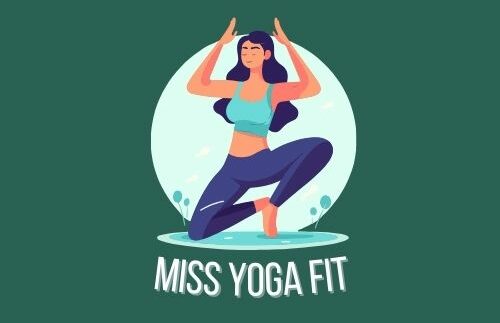Are you seeking a gentle and calming yoga practice? Look no further than Yin Yoga. This style of yoga focuses on long-held poses that target the deep connective tissues in your body. Yin Yoga is all about slowing down and embracing stillness, allowing you to tap into a sense of inner peace and tranquility.
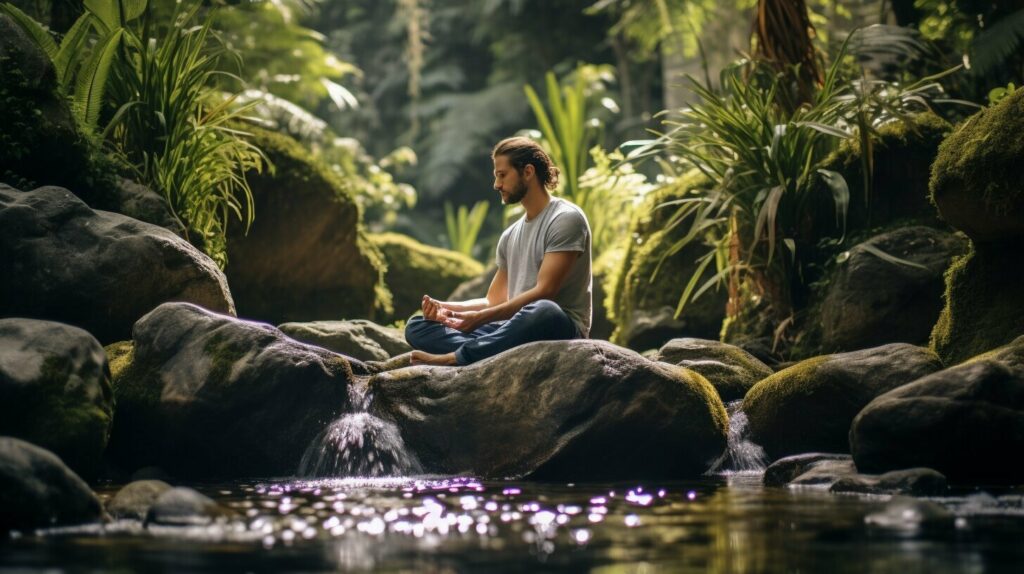
In this section, we will explore the principles and origins of Yin Yoga and how this practice can benefit your overall health and well-being. Let’s dive in and discover the essence of Yin Yoga together.
Key Takeaways:
- Yin Yoga is a gentle practice that focuses on long-held poses targeting the deep connective tissues in the body.
- The practice of Yin Yoga encourages stillness and mindfulness, promoting a sense of inner peace and tranquility.
- Yin Yoga is suitable for all levels, and its benefits can be experienced by anyone, regardless of their flexibility or experience with yoga.
- Consistent Yin Yoga practice can enhance flexibility, improve circulation, reduce stress, and promote relaxation.
- Yin Yoga is a perfect complement to other physical activities such as running, cycling, or weightlifting, adding an essential element of balance and restoration to your routine.
Table of Contents
The Benefits of Yin Yoga
Incorporating Yin Yoga into your routine can provide a range of benefits for both the body and mind. With a focus on longer-held poses, this practice targets the deep connective tissues of the body, promoting flexibility, circulation, and relaxation.
Increased Flexibility
The slow and steady nature of Yin Yoga allows muscles to relax, enabling deeper stretches and enhanced flexibility. By targeting the connective tissues, this practice can also improve joint mobility and support healthy range of motion.
Improved Circulation
As the body holds poses for an extended period, blood flow and oxygenation are increased, promoting healthy organ function and overall vitality.
| Benefits of Improved Circulation: | Enhanced immune system | Healthy heart function | Improved digestion |
|---|---|---|---|
| Reduced inflammation | Healthy skin | Improved cognitive function |
Stress Reduction
The meditative quality of Yin Yoga and the focus on deep breathing can help to reduce stress and anxiety. By slowing down and tuning into the body, practitioners can find a sense of calm and relaxation.
Enhanced Relaxation
Yin Yoga emphasizes the release of tension and stress in the body, promoting deep relaxation and improved sleep. Practicing before bedtime can help to calm the mind and prepare the body for restful sleep.
Incorporating Yin Yoga into your routine can support overall mental and physical well-being, promoting flexibility, circulation, stress reduction, and relaxation. Take the time to slow down, tune into your body, and experience the benefits of Yin Yoga today.
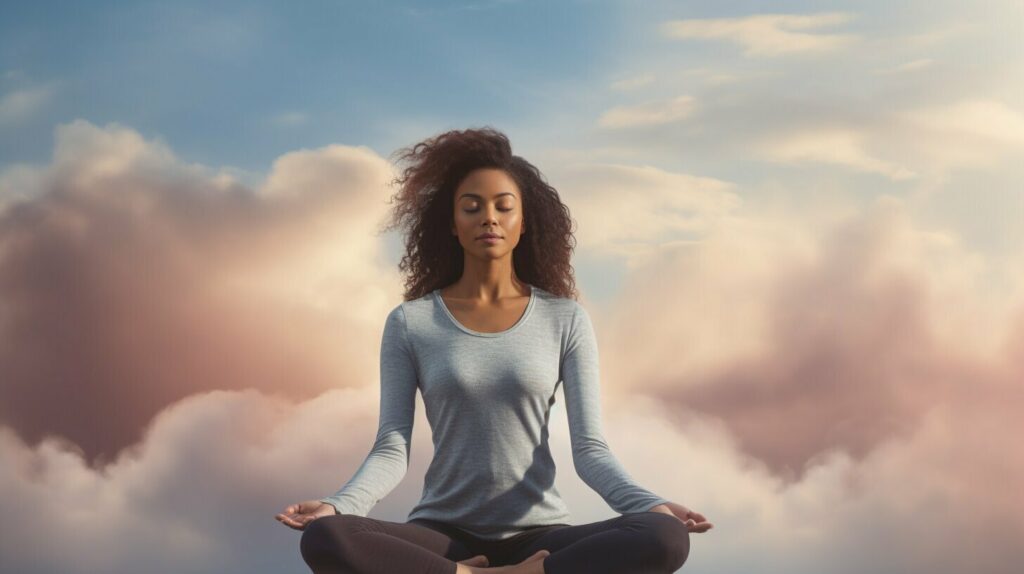
Yin Yoga Poses and Practice
In Yin Yoga, the key is to relax the muscles and sink into each posture, holding it for an extended period of time, typically between 3-5 minutes. This approach targets the deep connective tissues in the body, such as ligaments, bones, and joints, rather than the superficial muscles. By gently stressing these tissues, Yin Yoga stimulates the body’s natural healing process and promotes overall flexibility and mobility.
There are many Yin Yoga poses to choose from, each with unique benefits for the body and mind. Some popular postures include:
- Dragon pose: This pose stretches the hips, thighs, and groin area, promoting flexibility and mobility in these often tight areas. To do this pose, begin in a low lunge position with the back knee on the ground. Slowly walk the front foot out to the side and sink the hips toward the ground, holding the pose for several minutes on each side.
- Butterfly pose: Also known as Baddha Konasana, this pose targets the hips, inner thighs, and groin area. Sit on the ground with the soles of your feet together and gently press your knees toward the ground, holding the pose for several minutes.
- Child’s pose: This gentle pose provides a deep stretch for the back, hips, and thighs, while also promoting relaxation and calmness. Beginning in a kneeling position, lower the hips back toward the heels and reach the arms forward, holding the pose for several minutes.
When practicing Yin Yoga, it’s important to listen to your body and respect your limits. You should never push yourself to the point of pain or discomfort, and it’s always better to start with shorter holds and gradually work your way up to longer ones.
Remember to breathe deeply and slowly throughout your practice, allowing yourself to relax and release tension with each exhale.
If you’re new to Yin Yoga, it’s a good idea to take a class with a qualified teacher who can guide you through the postures and ensure proper alignment and technique. As you become more comfortable with the practice, you can begin to develop your own sequences and incorporate Yin Yoga into your daily routine.
Image for Yin Yoga Poses and Practice
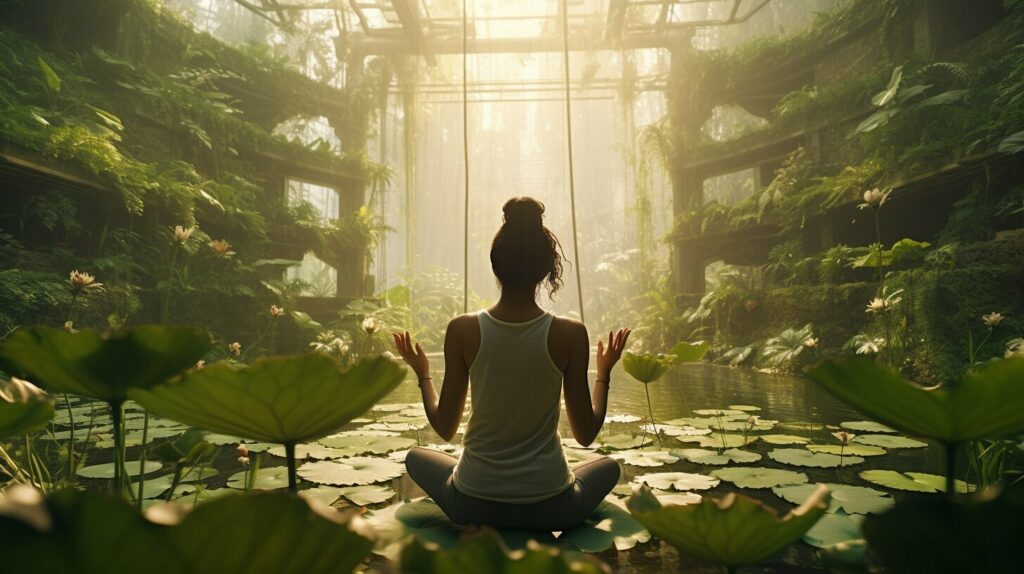
Yin Yoga Sequence for Flexibility
If you’re looking to increase your range of motion and release tension from your muscles and joints, a Yin Yoga sequence may be just what you need. This specialized practice targets the deep connective tissues in the body, helping to enhance flexibility and mobility over time.
| Posture | Description |
|---|---|
| Dragon pose | Begin in a low lunge position with your back leg straight out behind you. Slowly lower your elbows to the floor and hold the stretch for 3-5 minutes on each side. |
| Butterfly pose | Sit on the floor with the soles of your feet together and gently fold forward, reaching your arms out in front of you. Hold the stretch for 3-5 minutes. |
| Wide-legged seated forward fold | Sit on the floor with your legs spread wide apart. Fold forward from your hips and reach your arms out in front of you. Hold the stretch for 3-5 minutes. |
| Saddle pose | Sit on your shins with your hands behind you on the floor. Slowly lower your back to the ground and hold the stretch for 3-5 minutes. |
Remember, the key to a Yin Yoga practice is to hold each posture for an extended period of time, typically 3-5 minutes or longer. This allows the body to fully release tension and sink deeper into the stretch. If you feel any discomfort or pain, back out of the posture slowly and adjust as needed.
Consistently practicing this Yin Yoga sequence for flexibility can help improve your range of motion and release tension from your muscles and joints. Over time, you may find that you feel more comfortable and at ease in your body. Give it a try and see what benefits you can experience!

Yin Yoga Postures for Relaxation
In this section, we will explore a selection of Yin Yoga postures that promote deep relaxation and calmness. These poses are ideal for unwinding after a long day or preparing the body for meditation.
Child’s Pose (Balasana)
Begin on your hands and knees, with your wrists beneath your shoulders and your knees beneath your hips. Slowly lower your hips back towards your heels, stretching your arms out in front of you. Sink deeper into the pose with every exhale, taking long, slow breaths.
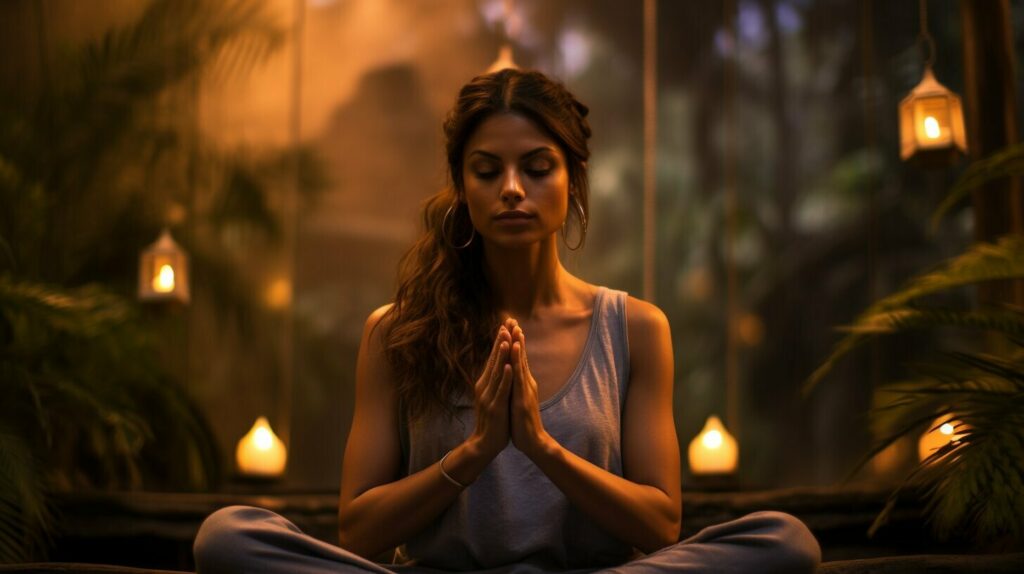
Supine Butterfly (Supta Baddha Konasana)
Lie on your back with the soles of your feet together and your knees falling out to the sides. Use blankets or blocks to support your legs if necessary. Let your arms rest at your sides and close your eyes, focusing on your breath and allowing your body to release tension.
Legs up the Wall (Viparita Karani)
Sit sideways against a wall with your knees bent, then slowly swing your legs up and rest them against the wall. Let your arms rest at your sides or place your hands on your belly, taking deep breaths and allowing your body to relax into the pose.
Twisted Roots (Parivrtta Surya Yantrasana)
Sit on the floor with your legs extended in front of you, then bend your right knee and place your foot on the outside of your left thigh. Twist your torso towards the right, placing your right hand behind you and your left elbow on the outside of your right knee. Take deep breaths and hold for several minutes, then switch sides.
Corpse Pose (Savasana)
Lie on your back with your arms at your sides and your legs extended. Close your eyes and take deep, slow breaths, allowing your body to sink into the floor. Focus on each part of your body, starting with your toes and traveling up to the crown of your head, releasing any tension you find along the way.
Incorporating these Yin Yoga postures into your practice can create a deeper sense of relaxation and calmness, and offer a rejuvenating experience for your mind and body.
Yin Yoga for Mindfulness
In our fast-paced world, it can be challenging to slow down and focus on the present moment. Yin Yoga, with its emphasis on stillness and meditation, can be a powerful tool for cultivating mindfulness.
By holding poses for an extended period, often five minutes or more, Yin Yoga encourages us to become fully present in our bodies and minds. As we breathe deeply and let go of distractions, we can develop a greater awareness of our thoughts, emotions, and physical sensations.
With consistent practice, Yin Yoga can help us become more grounded and centered, allowing us to approach life with a greater sense of calm and clarity. It can also promote self-acceptance and compassion, as we learn to release judgment and resistance towards ourselves and others.
During your Yin Yoga practice, focus on your breath and try to let go of any thoughts or distractions that arise. If you find your mind wandering, gently bring your attention back to your breath, allowing it to anchor you in the present moment.
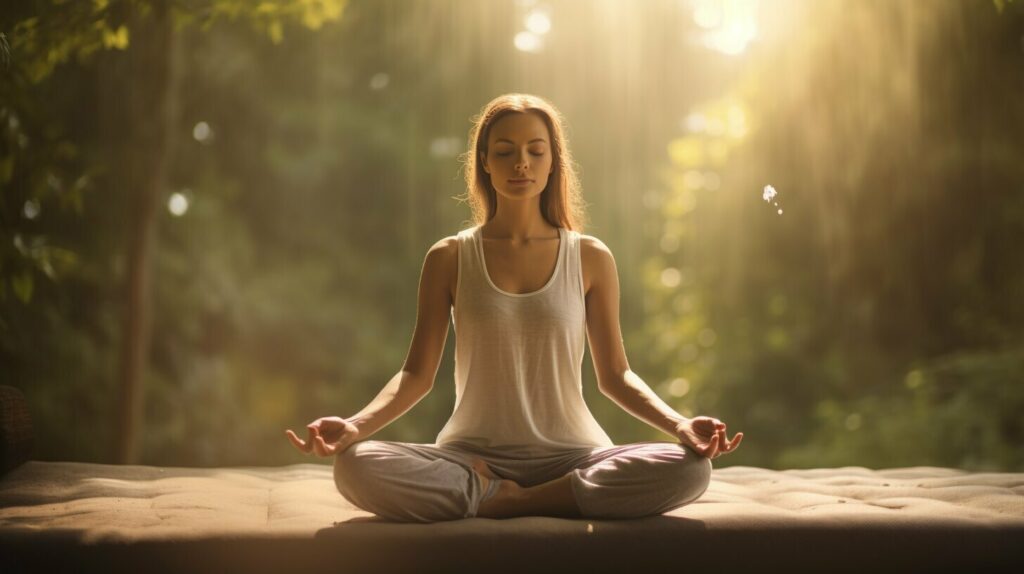
“Yin Yoga is a powerful tool for cultivating mindfulness and promoting self-acceptance.”
Yin Yoga for Stress Relief
Life can be stressful, and it’s easy to get caught up in the chaos of it all. That’s why incorporating Yin Yoga into your routine can be such a powerful tool for managing stress and anxiety. By slowing down and focusing on deep breathing and gentle movements, you can reduce tension in the body and find peace in the present moment.
One particularly effective Yin Yoga posture for stress relief is the Child’s Pose. This gentle forward fold stretches the hips, thighs, and ankles while calming the mind and relieving stress. To get into the pose, start on all fours with your hands and knees on the ground.
Spread your knees wide apart while keeping your big toes touching. Exhale and lower your torso down between your thighs, bringing your forehead to the floor. Extend your arms in front of you and hold the pose for several deep breaths, focusing on releasing any tension in your body and mind.
Another beneficial posture for stress relief is the Legs Up the Wall pose. This restorative posture helps to calm the nervous system and reduce anxiety by promoting relaxation and improved circulation. To get into the pose, sit with your right hip against a wall and swing your legs up the wall as you lie back on the mat.
Your buttocks should be touching the wall, and your legs should be extended straight up. Relax your arms by your sides and hold the pose for several minutes, focusing on deep breathing and releasing any tension in your body.
| Benefits of Yin Yoga for Stress Relief: |
|---|
|
By incorporating Yin Yoga into your routine, you can cultivate a greater sense of calm and resilience in the face of stress and anxiety. Allow yourself to slow down, breathe deeply, and find peace within, even in the midst of life’s challenges.
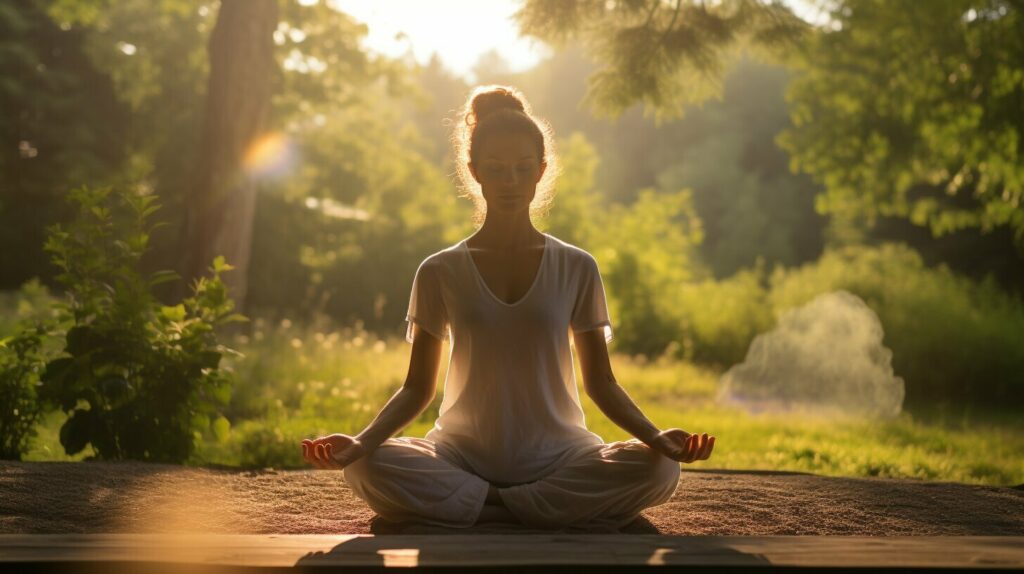
Yin Yoga and Meditation
Yin Yoga and meditation are two practices that go hand in hand, enhancing each other’s benefits. Both focused on mindfulness and presence, they encourage us to slow down, tune in, and connect with our inner selves. Yin Yoga provides the physical grounding and stillness necessary for meditation, while meditation offers a path to deepen the mental, emotional, and spiritual aspects of our being.
In Yin Yoga, we hold passive poses for several minutes, allowing time for the body to release tension and connective tissues to stretch. As we settle into the poses, we cultivate awareness of our breath, sensations, and thoughts, training the mind to be present and non-judgmental. This focused attention is the foundation of meditation.
Incorporating meditation into Yin Yoga can be as simple as focusing on the breath, or as advanced as exploring different meditation techniques, such as visualization, mantra repetition, or loving-kindness. By combining the two practices, we can experience a sense of deep tranquility and insight that extends beyond the mat.
“Yin Yoga provides the physical grounding and stillness necessary for meditation, while meditation offers a path to deepen the mental, emotional, and spiritual aspects of our being.”
To deepen your Yin Yoga and meditation practice, consider attending a retreat or workshop that combines the two practices. These immersive experiences can offer a supportive environment to explore new techniques, connect with like-minded individuals, and deepen your practice under the guidance of experienced teachers.
Remember, Yin Yoga and meditation are not only for the advanced practitioners but can be enjoyed and incorporated into any level of practice. Whether you dedicate five minutes or an hour, practicing Yin Yoga and meditation together can bring a sense of calmness, relaxation, and mental clarity to your daily routine.
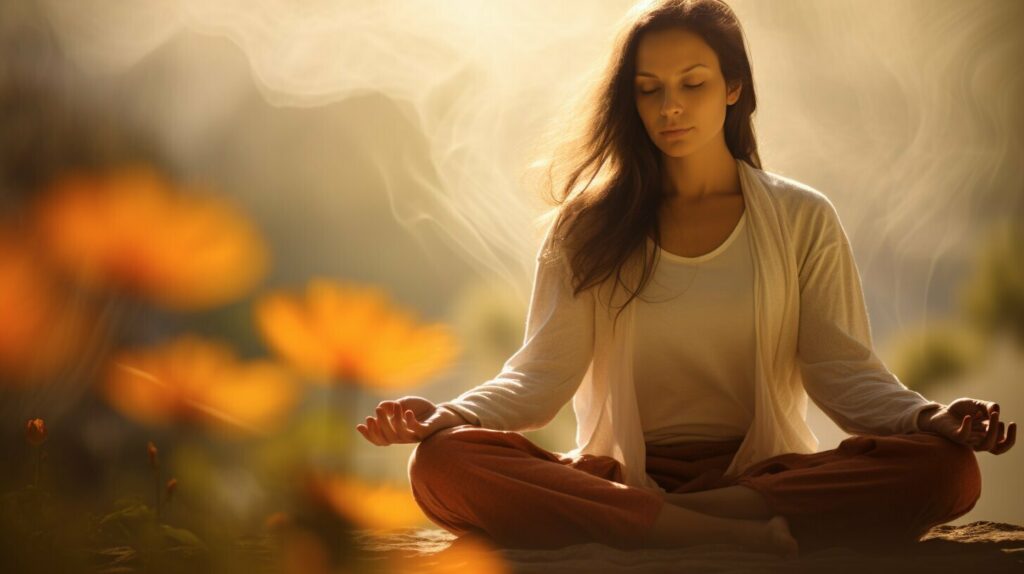
Conclusion
In summary, Yin Yoga is a gentle yet powerful practice that can provide numerous benefits for both the body and mind. By incorporating long-held poses that target the deep connective tissues, Yin Yoga can improve flexibility, circulation, and overall well-being.
We encourage you to explore the world of Yin Yoga and discover the unique postures and sequences that can support your health and wellness goals. Whether you’re looking to enhance flexibility, reduce stress, or cultivate mindfulness, there is a Yin Yoga practice that can meet your needs.
Start Your Yin Yoga Journey Today
By embracing Yin Yoga as part of your routine, you can foster a deeper connection with your body and find a greater sense of relaxation and peace. Whether you’re a seasoned yogi or a beginner, Yin Yoga is a practice that anyone can benefit from.
Thank you for joining us on this journey through the world of Yin Yoga. We hope that this article has inspired you to explore this gentle yet transformative practice and incorporate it into your daily routine. Remember to listen to your body, practice with intention, and always prioritize your own wellness.
FAQ
What is Yin Yoga?
Yin Yoga is a gentle practice that involves holding poses for an extended period of time to target the deep connective tissues in the body. It focuses on relaxation and stillness, allowing for a deep release and stretch.
What are the benefits of Yin Yoga?
Yin Yoga offers numerous benefits, including increased flexibility, improved circulation, stress reduction, and enhanced relaxation. It also promotes mindfulness and can be an effective tool for managing stress and anxiety.
How do I practice Yin Yoga?
To practice Yin Yoga, find a quiet and comfortable space. Choose a few poses or a sequence that targets specific areas of the body and hold each pose for 3-5 minutes. Focus on your breath and allow yourself to relax and surrender into each pose.
Can Yin Yoga help with flexibility?
Yes, Yin Yoga can greatly improve flexibility. The long-held poses help to gently stretch and release tension in the connective tissues, gradually increasing your range of motion over time.
Is Yin Yoga suitable for beginners?
Yes, Yin Yoga can be practiced by individuals of all levels, including beginners. The poses can be modified to accommodate different abilities and body types. It is important to listen to your body and not push yourself beyond your limits.
How often should I practice Yin Yoga?
The frequency of your Yin Yoga practice depends on your personal preferences and schedule. Consistency is key, so aim to practice at least two to three times a week to experience the benefits. However, even a shorter practice can be beneficial.
Can I combine Yin Yoga with other forms of exercise?
Yes, Yin Yoga can be combined with other forms of exercise. It can complement more dynamic and active practices, such as Vinyasa or Hatha Yoga, by providing a balance and promoting recovery and relaxation.
How long should I hold the poses in Yin Yoga?
In Yin Yoga, poses are typically held for 3-5 minutes. However, the duration can vary depending on your comfort level and experience. It is important to find a balance between challenge and ease in each pose.
Can Yin Yoga help with stress relief?
Yes, Yin Yoga can be a powerful tool for managing stress and promoting relaxation. The slow and meditative nature of the practice helps calm the nervous system and encourages a sense of tranquility and peace.
Can I practice Yin Yoga if I have an injury or chronic pain?
It is always recommended to consult with a healthcare professional if you have an injury or chronic pain before starting any new exercise program, including Yin Yoga. They can provide guidance on modifications and potential risks based on your specific condition.
Is it normal to feel discomfort during Yin Yoga?
Sensations of mild discomfort can be experienced during Yin Yoga, especially in the connective tissues. It is important to distinguish between discomfort and pain. Listen to your body and make adjustments if needed, but also embrace the opportunity to explore your edge and deepen your practice.
